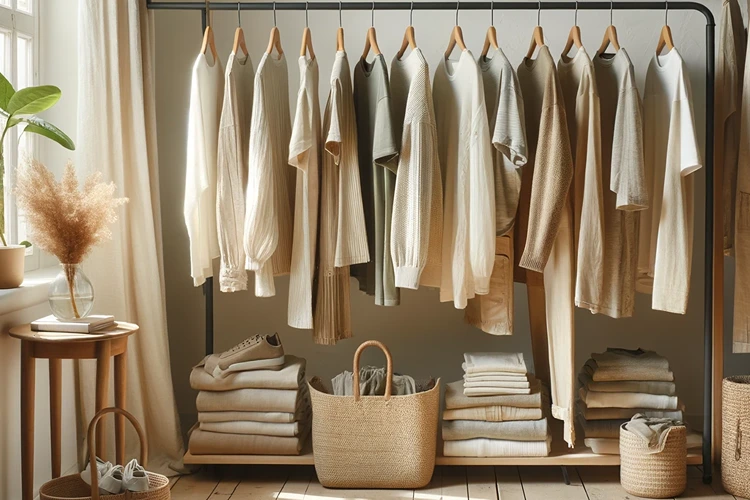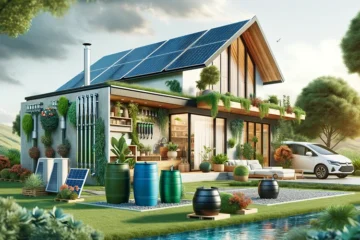Building an Eco-Friendly Wardrobe from Scratch

Ever paused to ponder the impact your wardrobe has on the planet? In an era where sustainability is more than a buzzword, building an eco-friendly wardrobe from scratch is not just a personal statement but a necessary step towards a sustainable future. But where does one begin? Transforming your closet into a green sanctuary is easier than you think.
Why Go Eco-Friendly?
Fast fashion is a major contributor to the world’s pollution, making the fashion industry one of the top polluters. By choosing an eco-friendly wardrobe, you’re not only reducing waste but also supporting ethical practices in fashion. It’s a win-win for you and the planet.
Starting with the Basics
The foundation of any wardrobe should be versatile, timeless pieces that can be mixed and matched to create multiple outfits. Look for high-quality, sustainable fabrics like organic cotton, bamboo, and recycled materials that are kind to the environment.
- Organic cotton t-shirts
- Bamboo fabric underwear
- Recycled polyester jackets
Helpful Hint:
When shopping for basics, consider neutral colors that can easily be paired with anything in your closet, maximizing the versatility of each piece.
Understanding Sustainable Fabrics

Not all fabrics are created equal, especially when it comes to sustainability. Learn to identify and choose materials that have a lower environmental impact, such as those derived from sustainable sources or recycled materials.
Investing in Quality Over Quantity
One of the pillars of an eco-friendly wardrobe is choosing quality garments that last longer, reducing the need for frequent replacements. This approach not only saves you money in the long run but also significantly cuts down on waste.
Stats:
A study found that extending the life of clothing by just nine months can reduce carbon, waste, and water footprints by 20-30% each. This highlights the impact of choosing quality over quantity.
Eco-Friendly Care for Your Clothes
How you care for your clothes can also affect their environmental impact. Opt for cold water washes, air drying, and eco-friendly detergents to extend the life of your clothes and minimize your carbon footprint.
Where to Shop for Sustainable Fashion
Finding stores that align with your eco-friendly values is crucial. Look for brands that are transparent about their manufacturing processes, use sustainable materials, and support fair labor practices.
Curating Your Sustainable Closet
Building an eco-friendly wardrobe isn’t just about purchasing new items. It’s about making thoughtful decisions that reflect your personal style and commitment to sustainability. Here are steps to curate your closet with purpose:
- Audit Your Current Wardrobe: Start by evaluating what you already own. Identify items that align with your eco-friendly goals and those that don’t. This process helps in making conscious choices moving forward.
- Practice Mindful Shopping: Before buying new, ask yourself if it’s an item you truly need or if there’s a more sustainable option, like swapping or buying second-hand.
- Embrace Minimalism: A minimalist approach focuses on quality over quantity, encouraging a smaller, more versatile wardrobe of pieces you love and wear regularly.
Helpful Hint:
Create a ‘wish list’ of items you need to fill gaps in your wardrobe and stick to it, avoiding impulsive purchases that don’t fit your eco-friendly criteria.
The Importance of Ethical Fashion
Ethical fashion goes hand in hand with eco-friendly practices, focusing on the human aspect of the clothing industry. Supporting brands that provide fair wages, safe working conditions, and transparent supply chains ensures that your clothing choices contribute to positive change in the fashion industry.
Second-Hand Shopping: A Sustainable Alternative
Second-hand shopping is a cornerstone of sustainable fashion. It reduces waste, saves resources, and offers a unique way to diversify your wardrobe without contributing to fast fashion.
- Thrift Stores: Local thrift stores can be treasure troves of unique, vintage, and high-quality items at a fraction of the cost.
- Online Marketplaces: Platforms like eBay, Depop, and ThredUp make it easier to find specific items, from everyday wear to designer pieces, all while shopping sustainably.
Stats:
Buying a used garment extends its life on average by 2.2 years, reducing its carbon, waste, and water footprint by 73%. This statistic underscores the environmental benefits of second-hand shopping.
DIY and Clothing Care
Maintaining the longevity of your clothes is just as important as how you acquire them. Simple DIY repairs, proper washing techniques, and regular care can significantly extend the life of your garments, making your wardrobe more sustainable.
Engaging with the Sustainable Fashion Community
The journey to an eco-friendly wardrobe is continuous. Engaging with the sustainable fashion community through blogs, social media, and events can provide inspiration, resources, and support to deepen your commitment to sustainable living.
FAQs
Bottom Line
Building an eco-friendly wardrobe from scratch is an intentional journey that benefits the planet, supports ethical practices, and can lead to a more meaningful relationship with your clothes. By focusing on sustainability, quality, and timeless style, you can create a wardrobe that reflects your values and stands the test of time. Remember, every sustainable choice, no matter how small, contributes to a larger impact on our world.
Additional Resources:
- Fashion Revolution [www.fashionrevolution.org]: A global movement calling for a fairer, safer, cleaner, more transparent fashion industry. It offers resources to help consumers make more informed choices about the clothing they buy and wear.
- The Good Trade [www.thegoodtrade.com]: A digital media and lifestyle brand covering sustainable living and fashion. It provides lists of ethical brands and guides for building a sustainable wardrobe.
- Ethical Fashion Initiative [www.ethicalfashioninitiative.org]: A program that connects artisans from developing countries with the international fashion industry. It’s a great resource for finding brands that support fair labor practices.
- Sustainable Fashion Matterz [www.sustainablefashionmatterz.com]: A platform for sustainable fashion news, stories, and interviews with industry innovators. It’s an excellent resource for staying updated on the latest in eco-friendly fashion.


